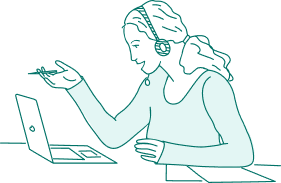Common signs and symptoms of Erb’s palsy
Erb’s palsy (also known as Erb-Duchenne palsy) is a birth injury caused by damage to the brachial plexus network of nerves during childbirth. This group of nerves connects the neck (clavicle) and torso (upper trunk) areas of the spinal cord to the arm.
Stretching or pulling on the brachial plexus network can cause significant damage and long-term or permanent symptoms affecting the use of the shoulder, arm, hand, and/or fingers.
Symptoms of Erb’s palsy usually only affect one side of a newborn’s body. The severity of Erb’s palsy symptoms can depend on the type and extent of the brachial plexus nerve injury.
For example, a child might suffer from paralysis when the nerve is torn completely from the spinal cord, but only from numbness if the nerve is just stretched.
Common Erb’s palsy symptoms include:
- Limp arm
- Muscle weakness
- Numbness
- Reduced grip ability
- Partial or complete paralysis of the arm
- Waiter’s tip (dangling arm with fingers curved upwards)
There are various causes of Erb's palsy. If your child is showing symptoms of brachial plexus birth palsy, talk with one of our registered nurses to learn if their injury was preventable.
Mild Erb’s palsy symptoms
A child can develop mild Erb’s palsy symptoms when the brachial plexus nerves are stretched during their birth. Mild types of Erb’s palsy stretch injuries include neuromas and neuropraxias.
Also known as “stingers” due to the burning symptoms they cause, neuropraxias occur when the nerves are stretched but not torn. Neuromas occur when nerve fibers are stretched enough to become damaged and cause scar tissue to form.
Mild Erb’s palsy symptoms include a burning sensation, muscle weakness, and/or numbness in the affected arm.
Thankfully, most mild cases of Erb's palsy usually resolve on their own around three months of age and do not have a long-lasting impact on a baby’s overall development. According to the American Academy of Orthopaedic Surgeons (AAOS), most babies diagnosed with Erb’s palsy will recover movement and feeling in the affected arm with daily physical therapy treatment.
Severe Erb’s palsy symptoms
Some rare cases of Erb’s palsy during childbirth can be more severe and can result in a wider variety of symptoms.
Ruptures and avulsions are the most severe types of brachial plexus injuries and cause more intense Erb’s palsy symptoms.
Ruptures occur when the brachial plexus nerves are torn and are no longer able to heal on their own. Avulsions are the most serious types of brachial plexus injuries and occur when the nerve root is completely torn from the spinal cord.
Severe signs of Erb’s palsy include:
- Complete or partial paralysis in the affected arm
- Muscle weakness
- Significant loss of motion in the shoulder, arm, hand, and/or fingers
Physical therapy is the main treatment option to eliminate severe symptoms of Erb’s palsy. This treatment focuses on range-of-motion exercises to help babies regain strength and movement in the affected arm.
Cases of ruptures and avulsions can be treated with nerve graft or nerve transfer surgeries. These surgical treatments replace severely damaged brachial plexus nerves with healthy nerves.
Download our free Erb's Palsy Guide to learn more about treatments for mild and severe symptoms.
Long-term effects of Erb’s palsy
Many cases of brachial plexus palsy do not have long-lasting consequences. According to a study from Dalhousie University and the IWK Health Centre in Canada, 80-90% of all children diagnosed with Erb’s palsy make a full recovery.
In rare cases, Erb’s palsy symptoms can cause several long-term effects and coexisting conditions due to the brachial plexus nerve damage.
Other long-term effects of Erb’s palsy include:
- Contractures (tightened muscles, joints, or tendons)
- Infant torticollis (stiffness of the head or neck)
- Muscle atrophy
- Stiff joints
- Numbness
Many of these coexisting conditions can be managed with daily Erb’s palsy physical therapy.
Learn more about Erb’s palsy symptom management
It can be scary if your child is showing symptoms of Erb’s palsy. Thankfully, the majority of Erb’s palsy symptoms will resolve on their own, leading to a complete recovery for children.
Be sure to keep an eye out for Erb’s palsy symptoms if:
- You had a prolonged or difficult delivery
- Your child had a high birth weight of over 8 lbs 13 oz (macrosomia)
- Your child was born feet-first (breech delivery)
- Your child was stuck in the birth canal
- Your doctor used forceps or vacuum extractors
The instances listed above are risk factors for developing Erb’s palsy symptoms. Early intervention and medical treatment can help your child make a full recovery from their condition.
To learn more about Erb’s palsy symptoms and treatments, download our free Erb’s Palsy Guide today.



